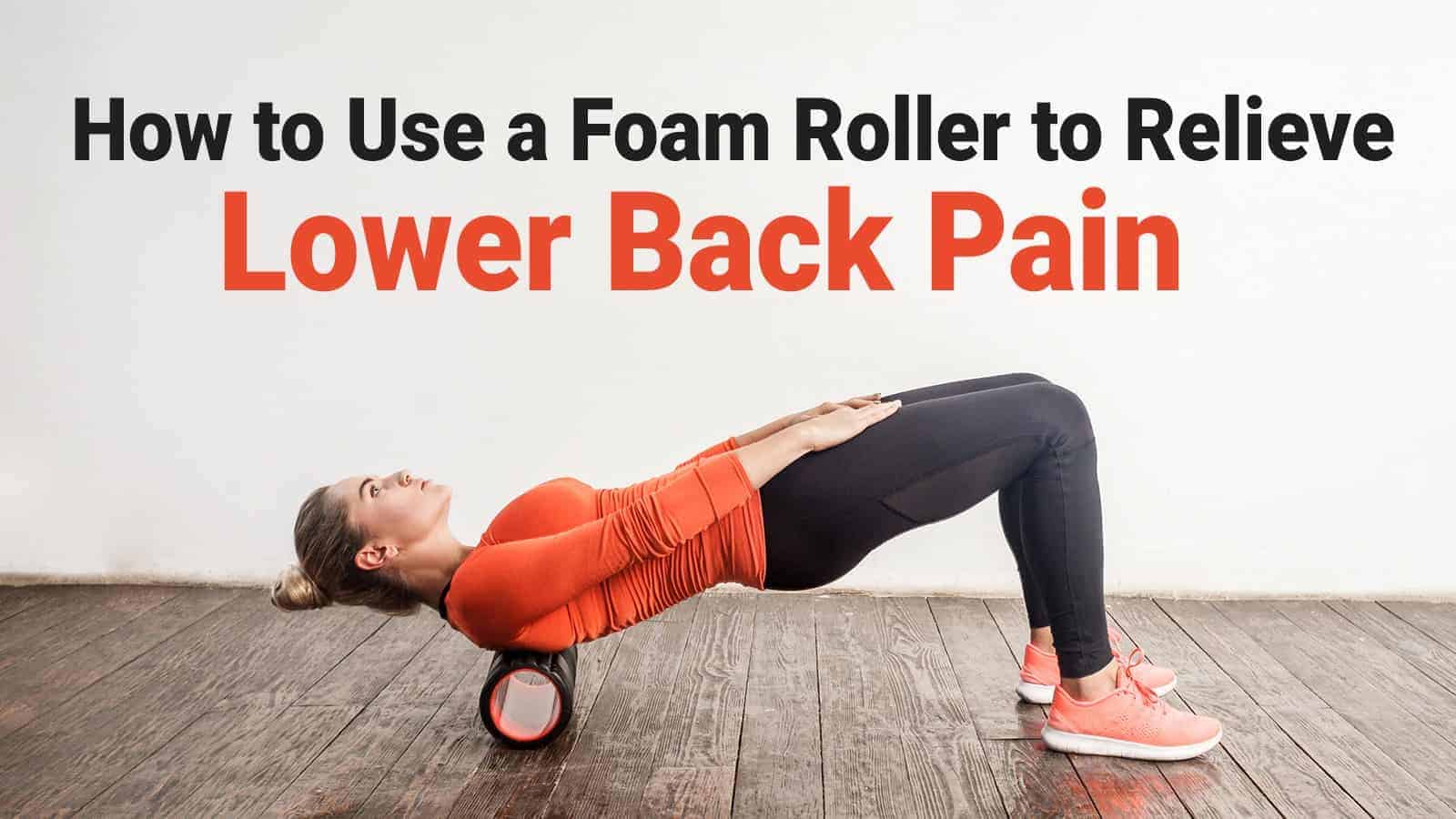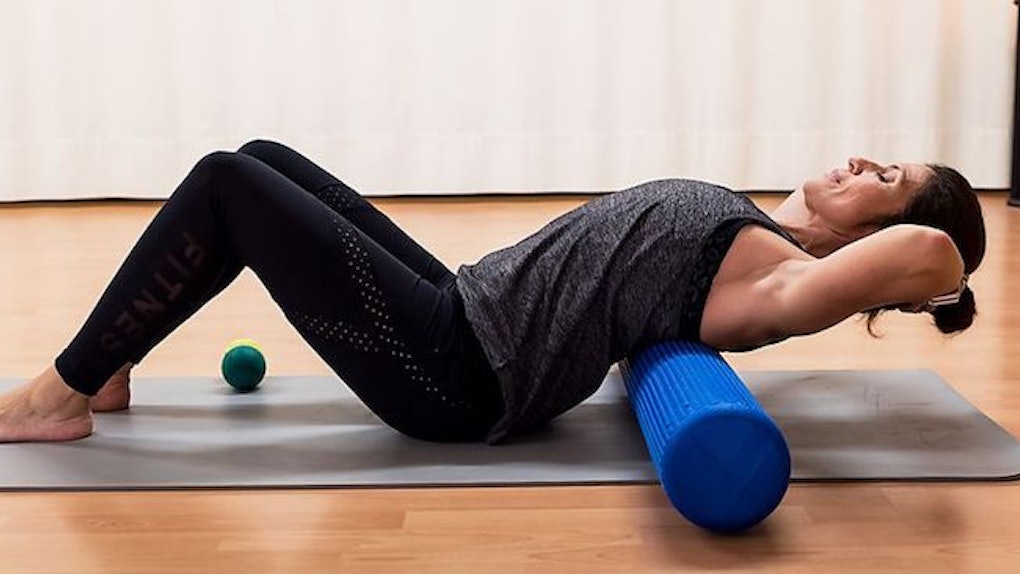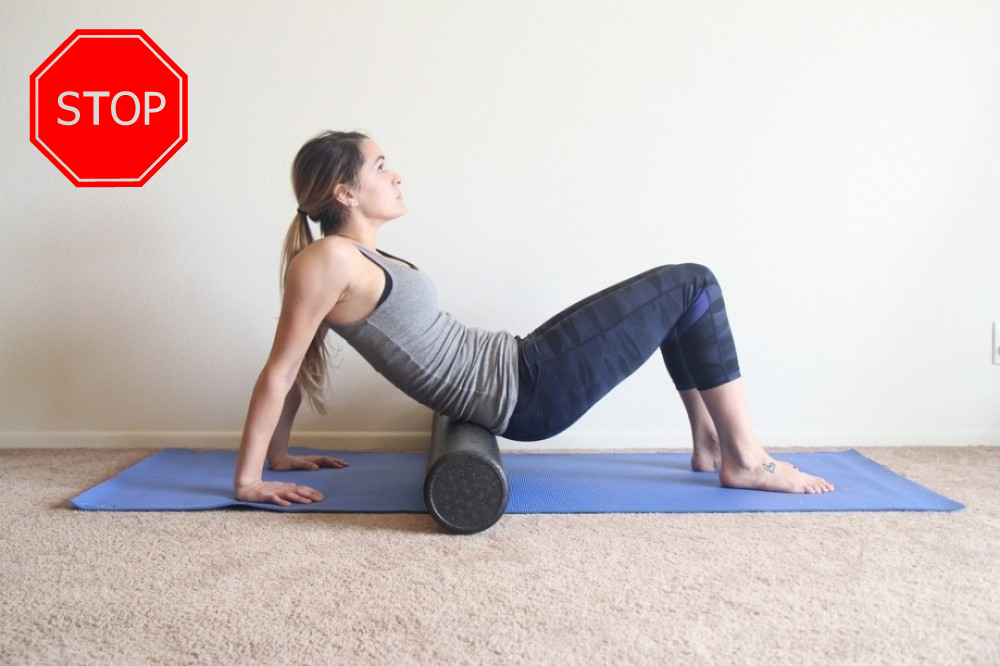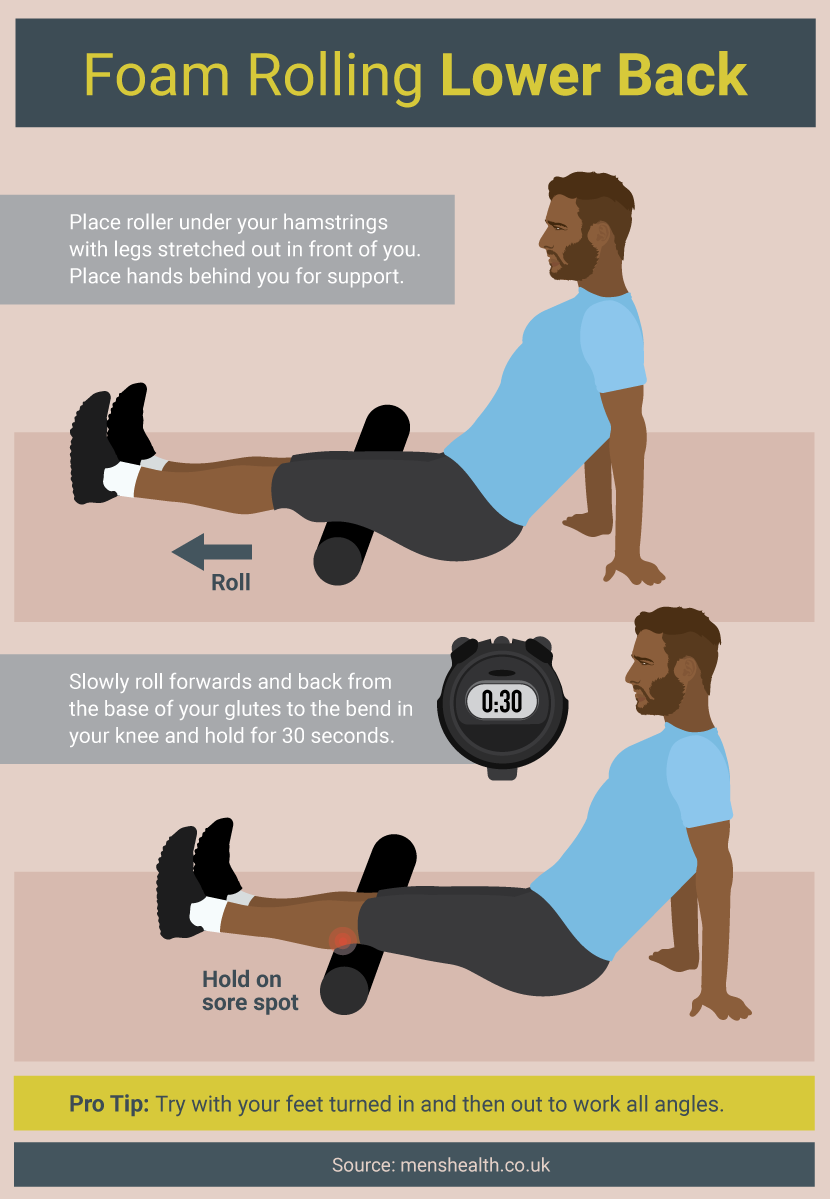Foam rolling is a form of self-myofascial release that is used to relieve muscle tension and improve flexibility. It involves using a foam roller to apply pressure to different parts of the body, including the lower back. Foam rolling the lower back can help to alleviate pain and increase mobility, making it an effective technique for those who suffer from chronic lower back pain or discomfort.
Step 1: Find a Flat Surface

Begin by finding a flat surface to lie down on. You can use a yoga mat or a carpeted floor to provide some cushioning for your back. Make sure that the surface is stable and not likely to shift or move during the foam rolling process.
Step 2: Position the Foam Roller

Position the foam roller so that it is perpendicular to your body. Place it underneath your lower back, just above your hips. Your knees should be bent and your feet should be flat on the floor. Use your hands to support your head and neck.
Step 3: Roll Slowly

Begin to roll slowly back and forth over the foam roller. Use your feet to control the movement and avoid rolling too quickly. Focus on the areas of your lower back that feel the most tight or painful. You can also move the foam roller up and down your spine to target different areas.
Step 4: Apply Pressure

As you roll, apply pressure to the areas of your lower back that feel the most tense. You can do this by using your feet to press down on the foam roller or by using your hands to push your body up off the roller. Hold the pressure for a few seconds before releasing and continuing to roll.
Step 5: Breathe Deeply

Remember to breathe deeply and slowly as you foam roll your lower back. This will help to relax your muscles and improve the effectiveness of the technique. Inhale deeply through your nose and exhale slowly through your mouth.
Step 6: Repeat as Needed

Repeat the foam rolling process as needed, focusing on the areas of your lower back that need the most attention. You can also use different foam rollers or massage balls to target specific areas of your back.
Precautions to Keep in Mind

It is important to be cautious when foam rolling your lower back. Avoid rolling directly over your spine or any areas that feel particularly sensitive or painful. If you have a history of lower back injuries or chronic pain, it is recommended that you consult with a healthcare professional before attempting foam rolling.
Additionally, it is important to listen to your body and stop foam rolling if you experience any discomfort or pain. Remember to hydrate before and after foam rolling and to stretch your muscles afterwards to help prevent soreness or injury.
Conclusion
Foam rolling can be an effective technique for relieving lower back pain and improving mobility. By following these simple steps and being mindful of your body's needs, you can safely and effectively foam roll your lower back at home.